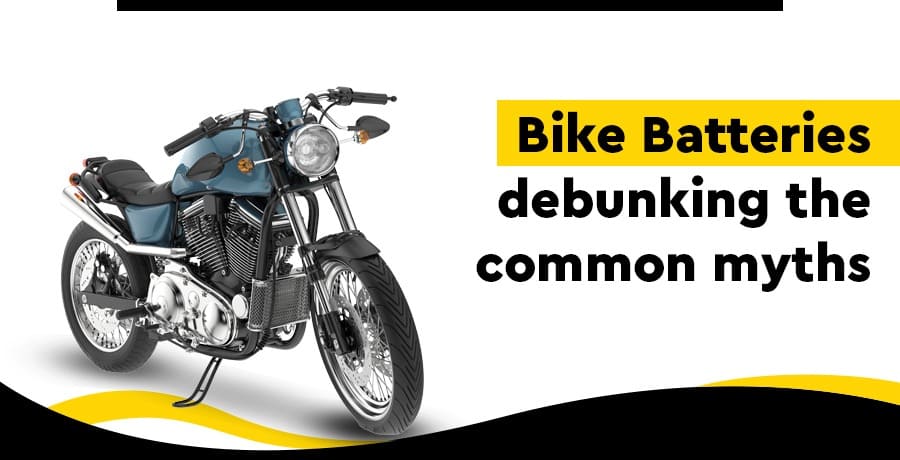Introduction
The world of bike batteries is often shrouded in myths and misconceptions, leading to confusion and frustration among riders. In this blog post, we'll debunk some of the most common myths surrounding bike batteries, empowering you to make informed decisions about your bike's power source.
Myth 1: All Bike Batteries Are Created Equal
This myth couldn't be further from the truth. Bike batteries come in various types, each with unique characteristics and performance capabilities. Some factors differentiating bike batteries include battery chemistry, capacity, cranking amps (CA), and maintenance requirements.
Myth 2: You Should Fully Discharge Your Bike Battery before Recharging It
This myth stems from outdated battery technologies, such as NiCad batteries. Modern bike batteries, particularly lithium-ion batteries, should be recharged before completely discharging. Deep discharging can damage the battery's cells and shorten its lifespan.
Myth 3: You Should Avoid Using Fast Chargers
Fast chargers are designed to provide a quick and efficient way to recharge your bike battery. While overcharging can be harmful, modern fast chargers have built-in safety features preventing this. A fast charger can be beneficial if you need to charge your battery quickly.
Myth 4: Bike Batteries Last Forever
Unfortunately, bike batteries have a finite lifespan. The average lifespan of a bike battery is around 2-3 years, but this can vary depending on factors such as battery type, usage, and maintenance.
Myth 5: Leaving Your Bike Battery Plugged In Will Overcharge It
Modern Two-wheeler batteries have built-in protection circuits that prevent overcharging. Once the battery reaches full charge, the charger will stop providing current. However, it's still a good practice to unplug your bike battery when fully charged to avoid unnecessary wear and tear.
Myth 6: Extreme Temperatures Don't Affect Battery Performance
Extreme Weather on Two-Wheeler Batteries can significantly impact performance. Cold temperatures can reduce the battery's capacity and cranking power, making it harder to start your bike. Conversely, hot temperatures can accelerate battery degradation and shorten its lifespan.
Myth 7: You Should Store Your Bike Battery Indoors During Winter
While storing your bike battery indoors during extreme cold periods can help extend its life, it can sometimes be necessary. If you must store your bike outdoors, consider using a battery tender or trickle charger to maintain a constant charge and prevent sulfation.
Myth 8: You Should Use Distilled Water in Your Two-wheeler Battery
Only use distilled water in flooded lead-acid batteries. If you have a maintenance-free or AGM battery, it should never require adding water. Using tap water or other fluids can damage the battery and shorten its lifespan.
Myth 9: You Can Dispose of Your Bike Battery in the Trash
Bike batteries contain hazardous materials and should never be disposed of in regular trash. To prevent environmental contamination, they must be recycled or taken to a designated hazardous waste collection center.
Remember, proper battery care and maintenance can significantly extend the life of your Two-wheeler battery and ensure optimal performance. By debunking these common myths and following best practices, you can keep your bike battery healthy and your rides worry-free.






